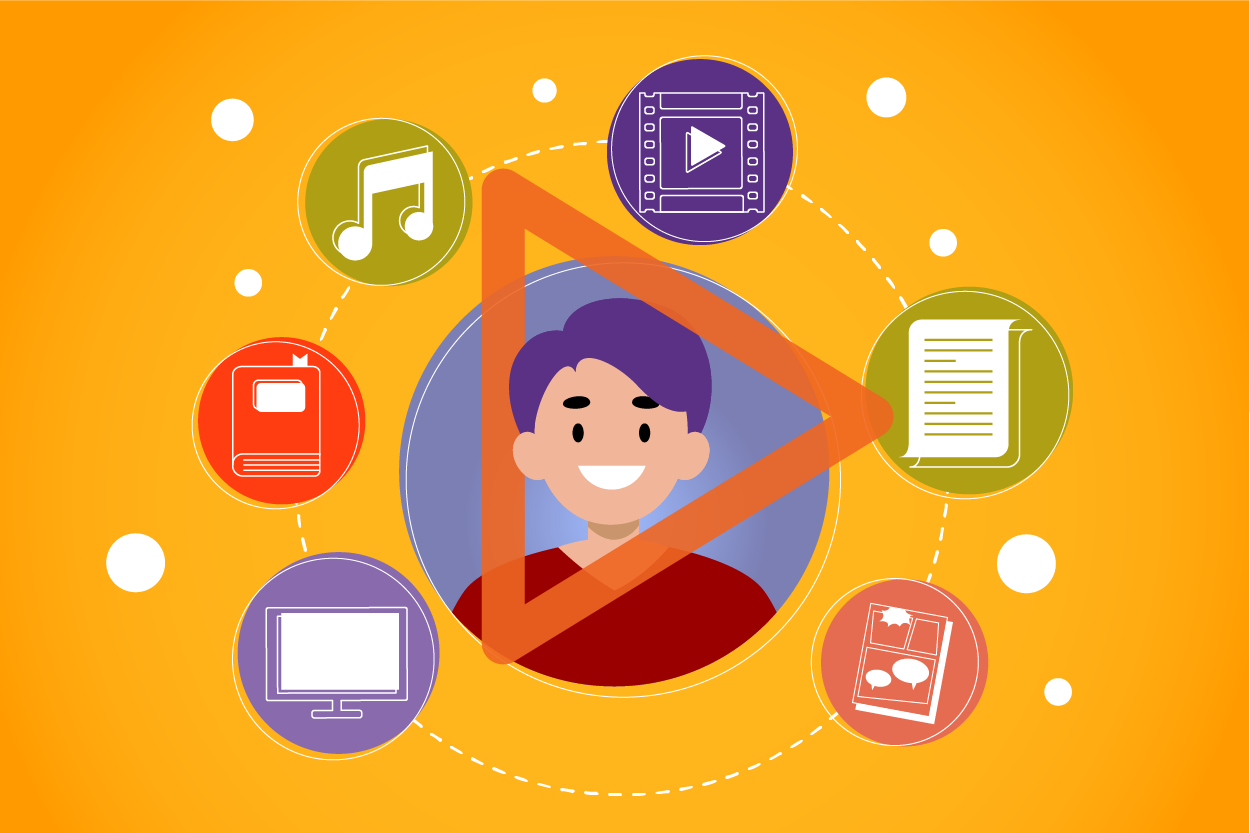

Meeting your audience in ways they prefer to consume content

Platforms of dissemination matter, and so does content format.
Audiences are becoming more diverse and more fragmented, they expect personalisation and value. When most people think of personalisation, they think of programmatic ads. When we think of value we think of how good the content is. One area where you can achieve both is by considering how your audience wants to consume their content.
In simple terms, some people like articles, some like video, some like podcasts and some like graphs. Repurposing your content for each different format is one way. Or, conceptualising each new piece of content as omni-channel channel content is another.
Think of it this way; a lengthy whitepaper can be effective for professionals like an engineer or technologist who has an in-depth understanding of a particular topic. But such an approach may not work for the generalist, who often might be one of the key decision makers in a purchase cycle.
A case in point is the recently released Taiwan Defence Report, which highlights the current state of Taiwan’s military and national security forces. Given its tense relationship with China, Taiwan ought to get its message about its defense strategy out there, not only to locals but also to the world — and perhaps even to China.
Matching content form to consumption pattern
How did Taiwan meet the content consumption patterns of its large and varied audience, most of whom aren’t defence officials?
1. Whitepapers
Taiwan’s Ministry of National Defence (MND) released the report in two languages; Mandarin and English, the two most used languages globally. It opens the possibility of the report being read by more people, revealing the defense strategy to allies promptly.
Additionally, it gives a sense of newsworthiness, meaning it can be picked up by foreign media, not only Chinese media, increasing exposure. This is a stark contrast to previous versions that took months to be translated after they were released.
The whitepaper consists of in-depth strategies on how Taiwan’s national defence transformation is going and what its capabilities are. This is in line with the purpose of a whitepaper, which is to educate and inform readers.
Due to its detailed information, it is not uncommon for whitepapers to have hundreds of pages. The defense report has 208 pages (English) and 196 pages (Chinese), respectively.
But now it gets interesting.
2. Musical ebook
Taiwan also released a condensed version of the whitepaper in the form of a 30-page ebook. Ebooks are usually less detailed and non-technical when compared to their whitepaper counterparts, making them ideal for non-experts and the regular Joe. Unfortunately, this ebook is only released in Mandarin, minimising its reach to the global audience.
Previously, we have mentioned the importance of sound and music to a video or film. The same thing can be applied to ebooks, as seen here, where readers are accompanied by a piece of ongoing music as they flip through the book.
3. Comic book
We are not all reader junkies who can spend hours being lost in the written word. Most of us are visual learners, so the Taiwanese government decided to release a comic book.
Through a comic book plotline, key national security messages are embedded in the content to attract a larger general audience. Doing so will also perhaps bring a sense of nostalgia as comic books are part of most people’s lives while growing up.
In fact, it’s actually not the first time that Taiwan has done this. They’ve done it before in 2009 as part of their plan to cultivate interest in military service among young readers. This happened during a period when they were trying to establish an all-volunteer military by their targeted deadline of 2015.
Pretty smart move, considering that around 70% of Taiwan’s Gen Zs are used to reading comic books and animations, which brings us to the next point.
4. Video
Did you know that people spend 18 hours a week on average watching online videos? Consumers want to get recommendations based on their mood and the length of the video.
It is no wonder that video-sharing platforms, such as YouTube and TikTok, keep on growing. To capitalise on this trend, the Taiwanese military also released a video on YouTube, the largest video-sharing platform with over two billion users.
The video reaffirms the military’s commitment to defending Taiwan’s sovereignty and protecting its citizens against threats. Highlights include the showing of its military capabilities, such as tanks and fighter jets.
The snippets of military training are also shown throughout the video that can be seen below:
5. Infographics
We have discussed the reasons why you should utilise infographics in getting your message or content across. It simplifies complex information and presents it in a digestible, visually appealing way. In today’s fast-paced world, not everyone has the time to read an in-depth report or ebook; infographics give them the ability to understand quickly.
Taiwan’s Ministry of National Defence also embraces this approach by creating five different online infographics, summarizing the main report contained in the whitepaper. Doing so will give the content more exposure as it becomes more shareable.
As seen above, presenting your content and messaging in different forms is crucial as it increases exposure; one of the goals in creating content, whether it is for marketing purposes to increase sales or to inform the general public like what Taiwan has done.








